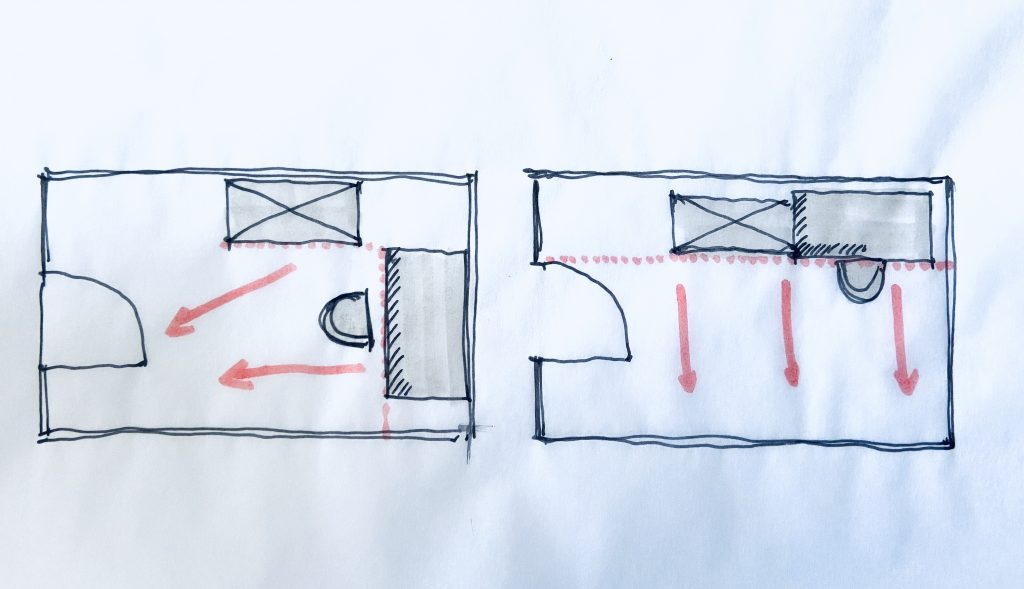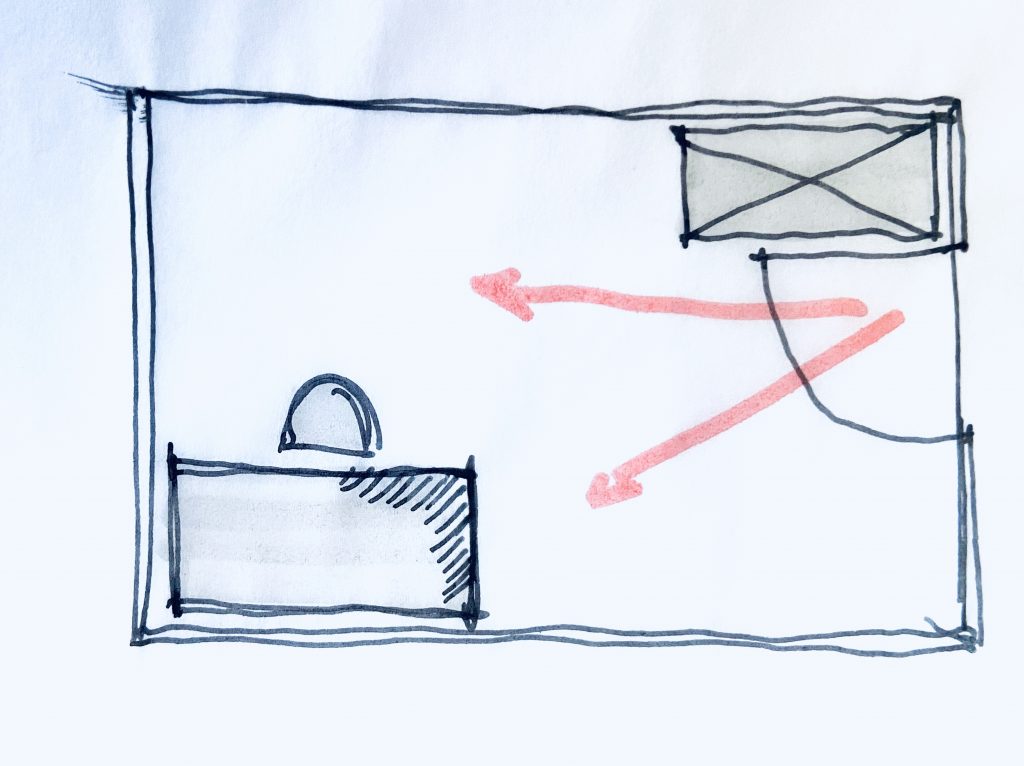It can be extremely tricky to achieve a harmonious positioning of furniture, especially in small rooms and when some objects of different character have to be accommodated.
But with these tips you can bring more peace and harmony to the arrangement of furniture
1) Try to use the dimension of furniture to fill gaps and use the whole length of a wall
Okay, it’s a little bit difficult to explain – in German as well as in English. I would like to use the example of a tube-like room and a bed:
Suppose the dimensions of a room 3 meters x 5 meters. If possible it would make the most sense to arrange the bed on the narrow side so that the area there would be almost completely filled. The space is used most effectively and there remains a large open area for the arrangement of further furniture or free space.

right side: only small space left around the bed to place other furniture
2) Try to create closed lines and bring lines in alignment
Perhaps you have already learned through my studio sprechstunde or one of my courses that our eyes like closed surfaces and lines. We perceive this as a pleasant order and a unity. You can also use this rule when arranging your furniture.
I go back to the previous example: If our bed is now placed on the 3 meter long wall, try to place it close to the corner so that there are as few vertical breaks as possible. You could fill the remaining space on the other side of the bed with a small table or with a couple of flower pots, a basket for bed linen, whatever. Mobile objects are best, they don’t look so massive. In any case, this would plug this hole and fill the entire length of the wall.

right side: furniture placed in alignment bringing more spacial peace
3) Create distance between the objects when you can’t bring them together as a unit
If you cannot meet the possibility of a closed lines, then try to choose the distance as large as possible so that there’s a clear differentiation and there is some calm again through the dissolution.

3) Make use of blind spots and corners
Large wardrobes can also be arranged very well in blind spots and corners, for example behind the door. These areas are often unsuitable for other pieces of furniture. So they are discreetly removed from the axis of view and rather subordinate themselves.
